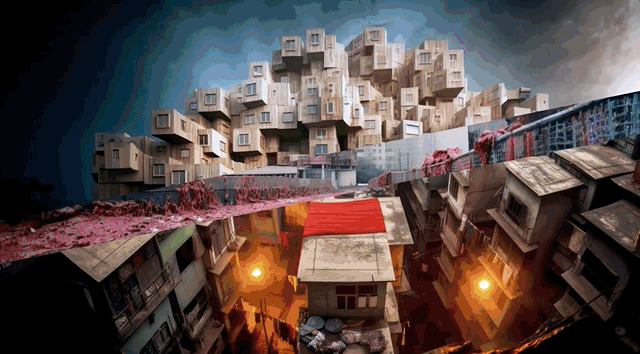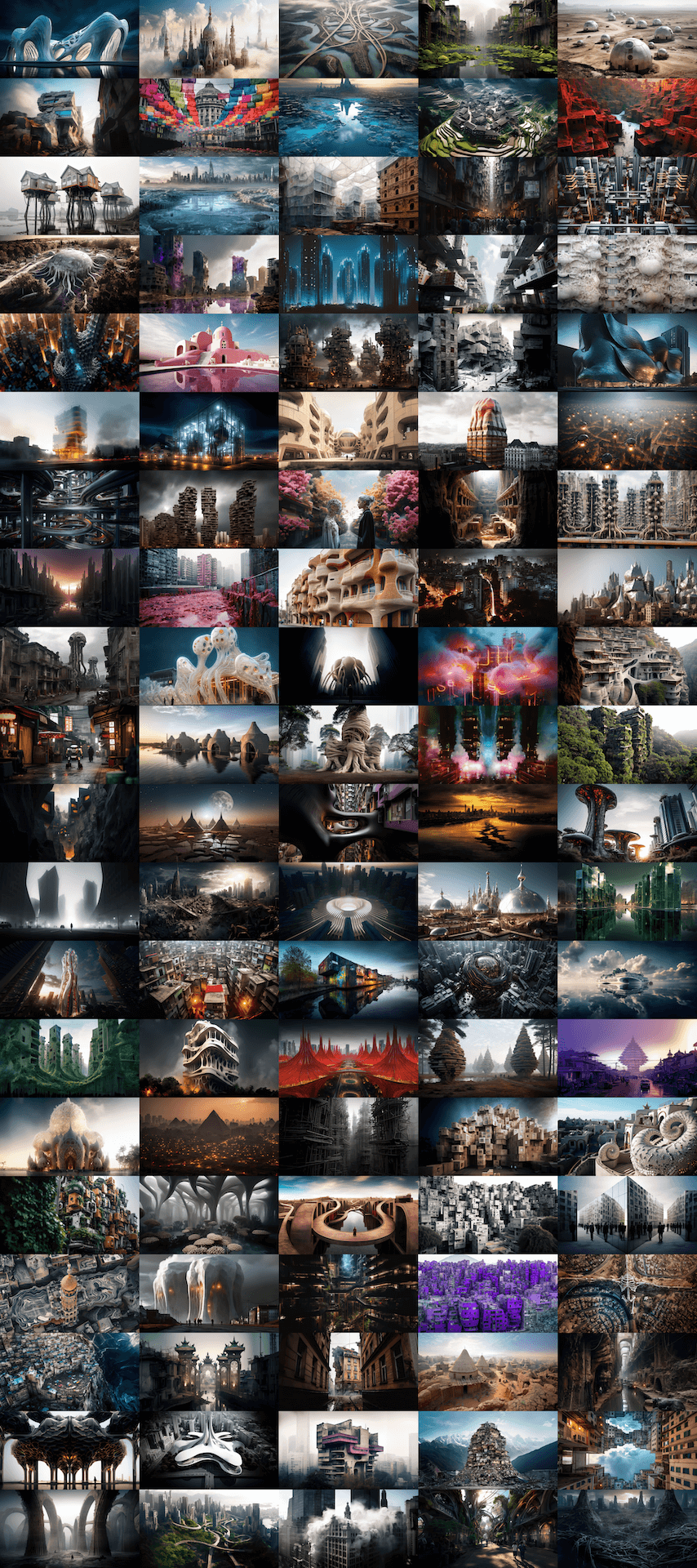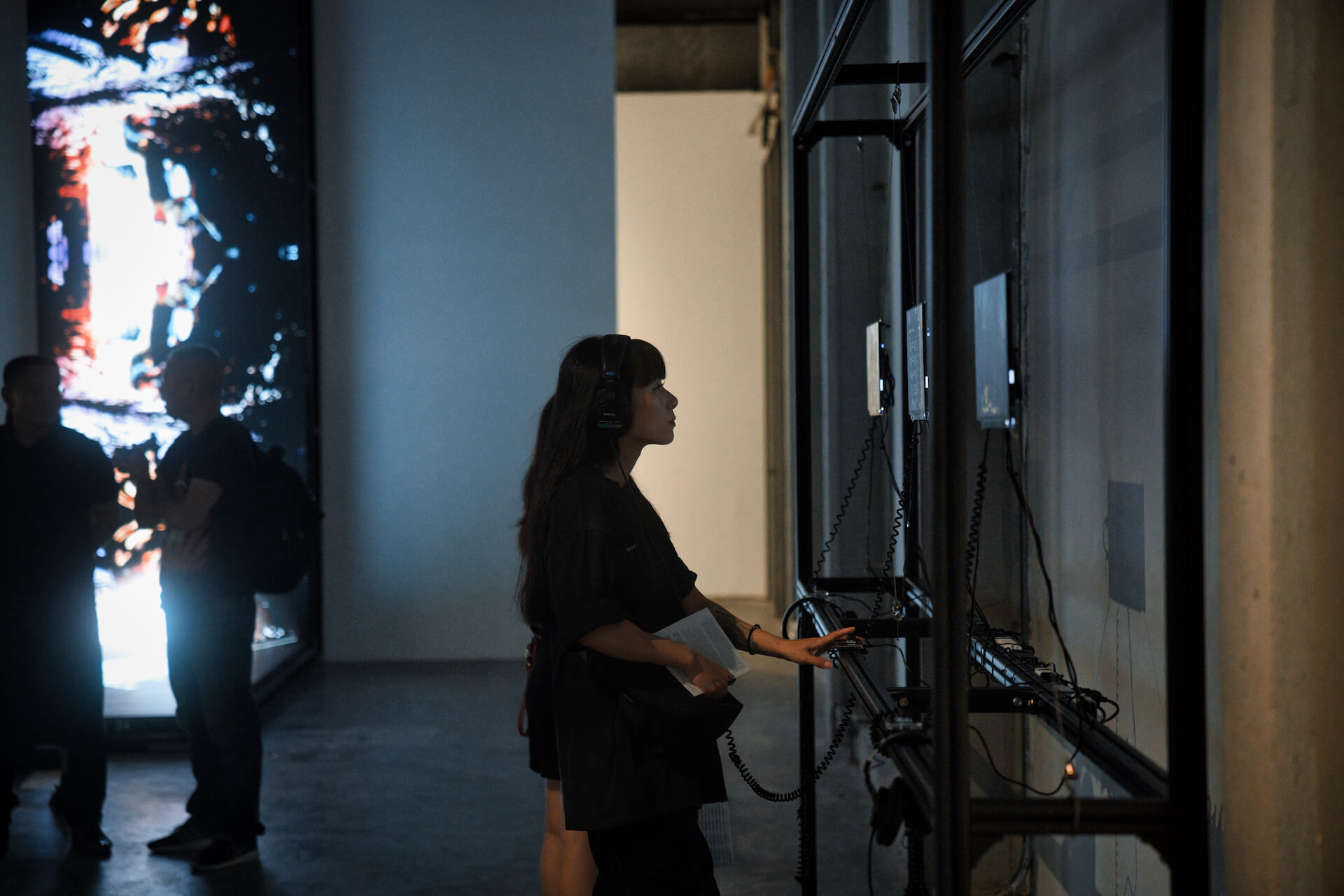A Cross-Species Encounter on Creativity
Commissioned artwork, TANK Shanghai (CN)
Interactive Software, 6 LCD screens, Generative AI
2023
Interactive Software, 6 LCD screens, Generative AI
2023




Urban Echoes is a generative media installation that orchestrates a continuous stream of audiovisual narratives through a system of custom-built AI agents. Drawing inspiration from Italo Calvino’s Invisible Cities (1972), the work presents imaginary cityscapes co-authored by human intention and machine cognition. Each city emerges as a symbolic artifact, an echo of culture, memory, and perception, conveyed through evocative text, synthetic visuals, and machine-generated narration.
At the core of Urban Echoes is a multimodal AI framework composed of a fine-tuned GPT model, a curated image dataset, and a meta-cognitive evaluation layer (mCog). This architecture is designed not only to generate content but also to reflect upon it, assessing the creative and semantic qualities of each output in real time. These processes together establish a recursive system of authorship, where the machine not only creates but critiques its own creations.
Calvino’s novel, in which the explorer Marco Polo describes imagined cities to Emperor Kublai Khan, serves as the conceptual foundation for this installation. Just as Polo’s cities exist within language and imagination rather than geography, the cities in Urban Echoes are generated within a hybrid consciousness, emerging from an interplay of algorithmic logic, poetic structure, and human cultural intuition.
The audience encounters a dynamic archive of fictional cities, each presented as a combination of prose narrative, visual composition, and spoken word. Versions are available in both English and Chinese, and an interactive interface enables audiences to navigate through individual cities and access analytical layers unique to each one. These include both linguistic metrics and interpretive evaluations, quantifying formal traits while probing aesthetic and emotional dimensions.
The system has been tasked to operate under certain constraints:
This balance of divergence and consistency ensures that each city retains its uniqueness while participating in a collective symbolic system. The outputs invite subjective interpretation and foster personal meaning-making, encouraging reflection on the dynamics of authorship, creativity, and agency in the age of intelligent machines.
Each city undergoes evaluation by the mCog layer, an AI agent that provides both quantitative metrics and qualitative assessments:
| Quantitative Analysis | Qualitative Analysis |
|---|---|
| Number of Sentences | Narrative Structure |
| Number of Words | Figurative Language |
| Number of Unique Words | Concept Innovation |
| Average Sentence Length | Tone and Style |
| Average Word Length | Lexical Diversity |
| Lexical Diversity | Syntactic Complexity |
| Flesch-Kincaid Readability | Semantic Novelty |
| Gunning Fog Index | Word Association |
The work poses critical questions at the intersection of aesthetics and computation:
Urban Echoes does not attempt to answer these questions definitively. Instead, it offers a space in which they may be felt, heard, and seen, echoing through the imaginary streets of cities that exist nowhere but within the circuits of cognition, both human and machine.
The work has been exhibited in Synthetic Cities.
Creation & Production: Stavros Didakis
Interface Design: Nora Yutong Liu
Media Design Assistance: Yanrui Shao、Guoxi Yang、Vicky Chen
Co-Funded: West Bund Group